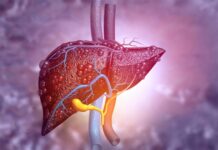Vidya Sethuraman
India Post News Service
The average number of daily COVID-19 cases passed a record three million globally this week, while deaths surged for a second week in a row. While the conditions to reclassify COVID-19 as endemic are not precisely defined, many countries – particularly in Europe – have begun lifting restrictions as they move towards living with the disease. For COVID-19 to become endemic, several factors would need to be considered, including how the disease continues to evolve as well as the type of immunity people acquire through infection and vaccines. EMS briefing on Jan 21st discussed this topic with the experts.

Dr. Ben Neuman, Ph. D, Chief virologist at the Global Health Research Complex at Texas A&M University said that the CDC’s proposal that the tenth day after the onset of symptoms or a positive test as the standard for lifting the isolation was unscientific and unsafe. He believes that the epidemic should be guided by science; otherwise it is likely to lead to further spread of the virus. He hopes that the mutant virus will be milder over time, but it’s too early to tell. He said that those who had been vaccinated with two shots and a booster were protected. He added that the additional doses of the vaccine raised both the levels of cellular immunity and antibody immunity. They are a good idea, and they are the best idea that we have so far to deal with this virus.
Dr. Dali Fan, University of California, Davis Health Science Clinical Professor, and volunteer vaccinator at California Northstate University in Elk Grove, California said we have to live on with this virus similar to cancer or cardiovascular diseases. People who have not been vaccinated at all have the lowest immunity. People who are vaccinated with one shot, two shots and booster shots will have different immunity.
Both the experts pointed out California is expected to reach the peak next week and is expected to gradually decline in early February.







